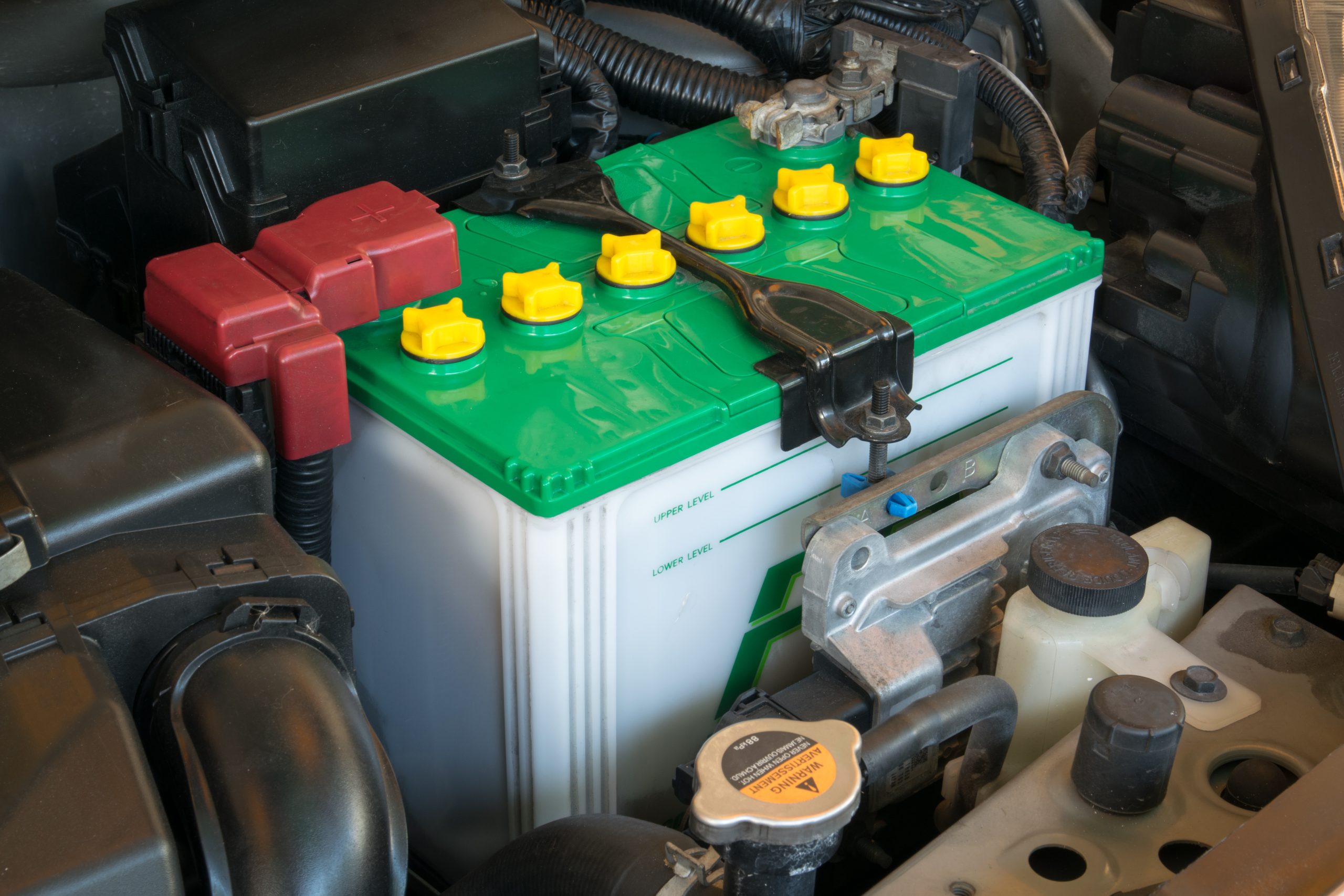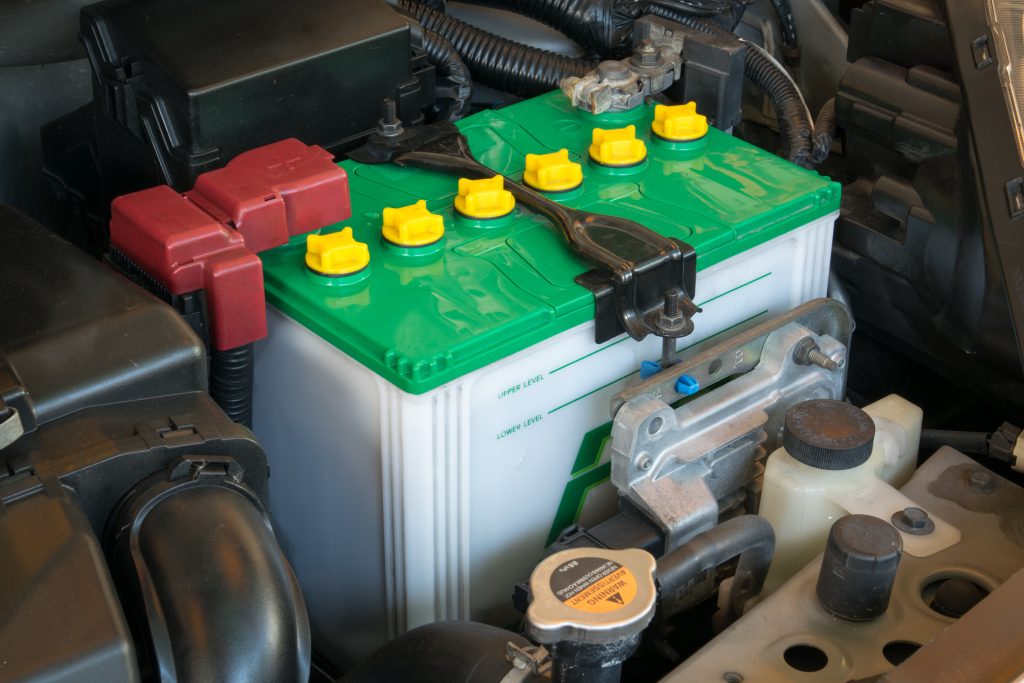
battery of a car

It’s the moment you’ve been waiting for: that car audio upgrade that will take your on-the-road entertainment to another level! You’re staring at a tangled mess of wires under the hood. Naturally, you wonder if it’s really necessary to disconnect the battery. Or is that just a rumor that’s floating around the Internet?
This decision matters. A spark or wrong move can fry a fuse or damage something vital in your car. While some people skip the battery step, most experts say it’s a smart move for safety. In this guide, you’ll get a clear answer. You will also see why this step may be more important than it first seems.
Why Disconnecting the Battery Is Recommended When Changing a Car Audio System
When you’re ready to swap out your car’s audio system, the process might seem simple. You may think it’s just about unscrewing a few panels. Then, plugging in new wires. But, hidden beneath the shiny dashboard, your car’s electrical system is like a network of busy highways. One wrong turn can cause a jam.
This is crucial for safety. Almost every professional and careful DIYer will advise you to disconnect the battery’s negative terminal before touching any wires. Let’s break down why this step matters. This is especially important for anyone wondering, “Do you really need to disconnect the battery to change the car audio system?”
Preventing Electrical Shorts and Damage
Working on a car audio system with the battery connected is risky. It’s like working on plumbing without shutting off the water. Even if you’re careful, a slipped screwdriver or a touched wire can lead to sparks flying or a fuse blowing immediately.
Keeping the battery connected means:
- Live wires stay hot. Accidentally touching a power wire to metal or another wire can create a direct short circuit.
- Fuses can blow in an instant, shutting down not just your new stereo, but possibly other electronics you rely on.
- Sparks can fly if you are not careful when you are changing your car’s audio system. A spark can fly. A spark can also burn you. So, make sure to be extra careful when you are working with wires.
Think of a car’s electrical system as a chain of delicate links. Pushing sudden power through them, even for a second, can snap a link. You might not see the break until something stops working. For example, if you connect a new car amp or head unit, it can send a surge down the line. This happens when you don’t disconnect the battery first. This surge can fry a circuit board inside the expensive receiver.
In many cases, fixing a blown fuse is a relatively inexpensive solution. However, if a power surge damages the radio’s circuit board or a control module, a simple upgrade can turn into a costly headache. Why risk it?
Protecting Sensitive Electronics and Airbags
Modern cars are like rolling computers, packed with sensitive electronics and safety modules. Your classic ride may have just a radio and speakers. Today’s vehicles often hide airbag modules and sensors near the dash. Some are just inches from your radio.
With the battery left connected:
- Electronic modules like ECUs or BCMs (the computerized brains of your vehicle) are always on standby, ready to receive power. A random surge or spark from the audio wiring can overload these modules in a split second.
- Airbags can deploy by accident. This isn’t just an urban legend. If power spikes in the system, there’s a small risk. The airbag could fire while you’re working near airbag sensors or modules. That surprise is not only expensive, but can also cause real injury.
Newer vehicles often have more complex infotainment systems, Bluetooth modules, and advanced security features. A power surge from crossing wires can corrupt software, kill a module, or leave you with mysterious error lights on the dash. Resetting these systems or replacing fried electronics isn’t just annoying—it can cost hundreds or even thousands of dollars.
All it takes is a few minutes to disconnect the negative battery terminal. This simple act cuts off electricity, lowers the risk of a costly accident, and protects your car’s sensitive safety systems. If you’re asking, “Do you really need to disconnect battery to change car audio system?” the answer comes down to safety and peace of mind.
Is It Always Necessary? Real-World Experiences and Alternative Approaches
The big question is whether you truly need to disconnect the battery to change the car audio system. This question comes with a range of answers. Manuals and pros recommend disconnecting every time. However, real-world experience shows that some skilled technicians and confident DIYers use workarounds instead. These approaches save time, but they carry their own risks. Let’s look at how the pros do it, and what can happen if you skip the battery step.
Careful Workarounds Used by Technicians
Professional installers rarely rush into a job. They have a bag of tricks for changing a car audio system with the battery still connected, though they always weigh the risks. Here are common tactics:
- Work with the Ignition Off: Most techs kill the ignition before touching anything. With the key out, there’s less risk of a live short, but some electronics can still draw power or spark if a wire slips.
- Remove the Radio Fuse: Instead of disconnecting the whole battery, some experts pull the fuse dedicated to the radio or audio system. This kills power to the lines you’re working on, but other systems in the dash might stay live.
- Cover and Protect Battery Posts: If space allows, some use thick rubber gloves or battery terminal covers, adding an extra layer of safety against accidental contact.
- Work Methodically and Avoid Rushed Moves: Technicians never force connectors or wires. They use quality tools, double-check diagrams, and minimize the time any wire is exposed.
- Use Insulated Tools: Pros often use screwdrivers and pliers with insulated handles to guard against stray sparks.
Why these steps help: Taking the time to isolate circuits and steady your hands can dramatically reduce (but never fully eliminate) risk. Pulling a fuse, for example, isolates one system. Insulated tools add a buffer if your hand slips. But these aren’t bulletproof solutions. If you forget to pull the right fuse or a nearby system shares a circuit, you can still run into trouble.
Techs may also scan the car’s electrical map. Modern vehicles sometimes tie radio circuits to airbag or security modules. So even with the ignition off and fuse out, a surge could cause issues elsewhere.
These workarounds exist because they save time, which is important when you’re on the job all day. However, every seasoned installer has a story to tell about when even careful steps weren’t enough.
What Happens If You Don’t Disconnect?
Let’s talk about the flipside. Skipping the battery disconnect can save you a few minutes, but the risks pile up fast. Real-world stories from both forums and seasoned experts show what can go wrong:
- Blown Fuses and Fried Electronics: Maybe you pull a dashboard panel and a wire brushes metal. Suddenly a fuse pops. If you’re unlucky, a surge travels to the radio or even the car’s control module. The fix? Sometimes it’s a $2 fuse, but it can just as easily be a $500 computer replacement.
- Unplanned Airbag Deployment: This is rare, but it does happen. Dash airbags have sensors and wiring close to stereo components, especially in newer vehicles. One accidental arc and you might trigger an airbag, which can cause injury and expensive repairs.
- Random Error Codes: Modern cars love their warning lights. Even minor shorts can set off check engine, airbag, or radio fault codes. Clearing these usually needs a scan tool—a hassle for DIYers.
- Data Loss and Factory Resets: Occasionally, a power blip wipes radio presets or clock settings. On newer cars, you might lose backup camera calibration or even climate control memory.
- Permanent Module Damage: For complex vehicles with integrated infotainment systems, a single small spark might fry a logic board or brick a touchscreen.
Here’s a quick look at situations where skipping the disconnect step went wrong:
- An installer swapped a head unit in a luxury sedan, left the battery connected, and triggered a fault in the airbag system. The airbag didn’t deploy, but it resulted in a trip to the dealer and a reset fee.
- A DIYer replaced door speakers in a late-model hatchback without disconnecting the battery or fuses. One wire slipped, instantly blowing a fuse not only for the radio, but also for the instrument cluster—leaving the speedometer and fuel gauge dead until a replacement fuse could be found.
- On a forum, a user described losing all radio presets and triggering a security lockout after a brief spark from an exposed wire, requiring a specialized code from the dealer to unlock the stereo.
Risks vs. time saved: Some car owners roll the dice and get away with it, especially when swapping simple speakers or doing quick swaps on older vehicles without many electronics. But for every easy fix, there’s a story where a shortcut adds hours of frustration or an unexpected repair bill.
The safest bet remains to disconnect the battery, especially in newer cars filled with sensitive modules. But if you do use a workaround, move slowly, use insulated tools, and never assume the risk is zero.
So, do you really need to disconnect battery to change car audio system? The honest answer depends on your tolerance for risk, your knowledge of your own car, and how much trouble you’re willing to face if things go sideways.
Other Considerations Before You Begin Your Audio Upgrade
Before you grab your tools and start changing your car’s audio system, consider a few extra things. Think about additional factors before proceeding. Disconnecting the battery is a crucial safety step. How you handle your car’s electronic memory and navigate modern vehicle wiring determines the upgrade’s smoothness. Here’s what you need to know to avoid headaches and keep your car’s systems running as they should.
Dealing with Lost Radio Presets and Memory
Disconnecting your car battery, even for a short time, often wipes out radio presets, clock settings, and security codes that keep your audio system running smoothly. This can feel like wiping your phone to factory settings—your favorite stations, Bluetooth pairings, and some climate control settings may disappear.
Here’s how to protect your settings and avoid frustration:
- Use a Memory Saver Device: Plug a memory saver into the OBD-II port or the 12V accessory socket before disconnecting the battery. This tool feeds just enough power to your electronics to keep everything in memory.
- Know Your Radio Code: Many OEM car radios have a security code. If power is lost, you’ll need to punch this code in to use the radio again. Check your owner’s manual or ask your dealer for the code before starting, especially if you drive a European or luxury model.
- Write Down Important Settings: Jot down your favorite radio stations, clock time, and Bluetooth connections. It only takes a few minutes to record these, but it can save you plenty of hassle if anything gets wiped.
- Check for In-Built Memory Retention: Some modern radios use non-volatile memory or EEPROM, letting them keep presets even after power loss. If you’re lucky, your car has this feature, but don’t count on it unless you confirm first.
If you do lose your presets or codes, restoring them is mostly a manual process:
- Re-enter the radio security code if needed.
- Set your clock and calendar.
- Reprogram radio stations and sound profiles.
- Pair your phone to Bluetooth again.
Losing memory settings isn’t permanent. However, it does slow you down. This is especially true if you’re eager to hear that first song on your upgraded car speakers. Taking a few steps before you disconnect the battery will save you time and annoyance later.
Handling Complex Electrical Systems in Modern Cars
Upgrading a car audio system used to be a plug-and-play job. Now, vehicles are wired with layers of safety and smart technology. The car’s battery doesn’t just power the radio—it runs a network of electronic control units (ECUs), sensors, airbag modules, and infotainment systems, all talking to each other through advanced wiring.
Modern car electrical systems feature:
- Multiple ECUs: Your audio upgrade may share power or data lines with airbags, security, or climate systems.
- Advanced Driver-Assistance Features: Blind spot monitors, lane keep assist, and emergency braking rely on stable electrical connections near your dashboard.
- Smart Electronics: Features like keyless entry, remote start, and touchscreen controls mean the car is rarely “fully off” even with the key out.
This complexity means that a simple slip, spark, or surge can create ripple effects—sometimes triggering warning lights or disabling safety features until reset.
Here’s how to work smarter with these systems:
- Check Your Owner’s Manual First: Look for sections on audio upgrades or battery disconnects. Some cars require special procedures to reset electronics after power loss.
- Use Proper Diagnostic Tools: If you see warning lights after your upgrade, you may need an OBD-II scan tool to clear codes or reset modules.
- Don’t Guess with Airbags or Sensors: If your installation involves removing panels or wiring near airbags or advanced sensors, consider getting help. Sometimes those safety systems must be recalibrated after power is reconnected.
- Consult Online Forums or Guides: Many car-specific forums have wiring diagrams and advice that can help you spot tricky connections or avoid common mistakes.
- Call a Professional for Newer Cars: If you’re working on a recent model packed with features, it’s safer to get a pro involved. They have the right tools and experience to protect both your new audio system and your car’s electronics.
Today’s cars are more than just machines—they’re rolling computers. When you ask, “Do you really need to disconnect battery to change car audio system,” remember that keeping your car’s electronics safe is about more than avoiding sparks. It’s about knowing how sensitive these systems are, and taking smart steps to keep everything working just as it should.
Taking the time to understand your car’s memory settings and electronic complexity can make your audio upgrade smooth and stress-free.
Final Thoughts….
Changing a car audio system feels like an upgrade that should be easy, but the hidden risks are real. Most owners and pros agree—disconnecting the battery is the safest move, especially with modern cars full of electronics. This small step can save you from blown fuses, fried modules, or expensive surprises.
If you’re someone who likes to cut corners, be cautious. Skipping battery disconnection may work most of the time. However, one slip can cause things to go wrong. Taking a few minutes to disconnect the negative terminal is worth the peace of mind. Your car deserves that bit of caution.
Have you ever skipped this step or found a clever way to keep your settings safe? Share your stories or tips in the comments to help others learn from real experiences. Thanks for reading and being part of a smarter, safer car audio community.



